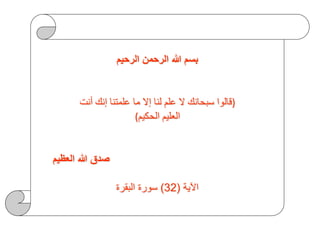The document discusses the effect of variable microorganisms on the efficiency of microbial fuel cells (MFCs). It begins with an introduction explaining the need for renewable energy sources due to depleting fossil fuel reserves. It then provides background on MFCs, describing them as bioelectrochemical systems that generate electricity via microbes metabolizing organic substrates. The document outlines the basic components and functioning of MFCs. It discusses various microbe species used in MFCs and different MFC designs. It also covers types of MFCs like mediator-based vs mediator-free and sediment MFCs. Finally, it lists some potential applications of MFCs in areas like wastewater treatment and biosensing.























![.1 Collection of substrate samples
Five samples of different substrate were collected from different localities at
Sohag Governorate .
[Cow dung – diluted Wheat straw hydrolystate – Nile sediment – Wastewater –
Human urine],
Samples were collected during the period from April 2016 (summer) to January
2017(winter).
Chemical & Physical properties of theses substrate samples were measured. such as:
2.1 COD Measurement
2.2 Measurement of total organic carbon TOC
2.2 Measurement of total nitrogen TN
2.4 pH measurement
2. Determination of chemical parameters for samples](https://image.slidesharecdn.com/mfc-220803120228-21d05f1c/85/mfc-results-1-10-1-pptx-24-320.jpg)




![3.2. ANODE
3.2.1 Effect of different Substrate types
The purpose of the present study was to evaluate the availability of the different five types of
substrate as fuel for an anode MFC as: [Cow dung – diluted Wheat straw hydrolystate – Nile
sediment – Wastewater – Human urine] to generate electricity in double chamber microbial
fuel cell system.
3.2.2 Effect of different volumes of wastewater in anode chamber
Trials: In the first trial, 150 ml of wastewater was added.
During second trial, 200 ml of wastewater was added.
In third trial, 250 ml of wastewater was added.
In fourth trial, 300 ml of wastewater was added.](https://image.slidesharecdn.com/mfc-220803120228-21d05f1c/85/mfc-results-1-10-1-pptx-29-320.jpg)



![3.4. ELECTRODE
3.4.1 Effect of electrode materials
We use two types of electrodes [carbon- copper]
In first cell Anode and cathode contain Carbon electrode with Surface Area: 15.0 cm2.
In second cell Anode and cathode contain Copper electrode with Surface Area: 5.3 cm2.
1. Wheat Straw
2. Cow dung
3. Human Urine
4. Wastewater](https://image.slidesharecdn.com/mfc-220803120228-21d05f1c/85/mfc-results-1-10-1-pptx-33-320.jpg)

![3.5.1.2.4. SEM Analysis
The images were captured using scanning electron microscope (SEM) (Hitachi) JEOL JMS
5300 scanning electron microscope at magnifications of 7500 using an electron beam high
voltage of 30 kV.
3.5.2 Assay isolated cultures bacteria used in MFCs
A pure cultures of [Isolate 1, 2, 3, 4, 5,] were isolated and identification at experiments 3.5.1
used as inoculum in the anode compartment of the MFC
3.5.3 Assay pure and mixed identified cultures bacteria used in MFCs
Pure cultures of [Escherichia coli– Bacillus subtilis- Staphylococcus aureus] were used as
inoculum in the anode compartment of the MFC.](https://image.slidesharecdn.com/mfc-220803120228-21d05f1c/85/mfc-results-1-10-1-pptx-35-320.jpg)


































